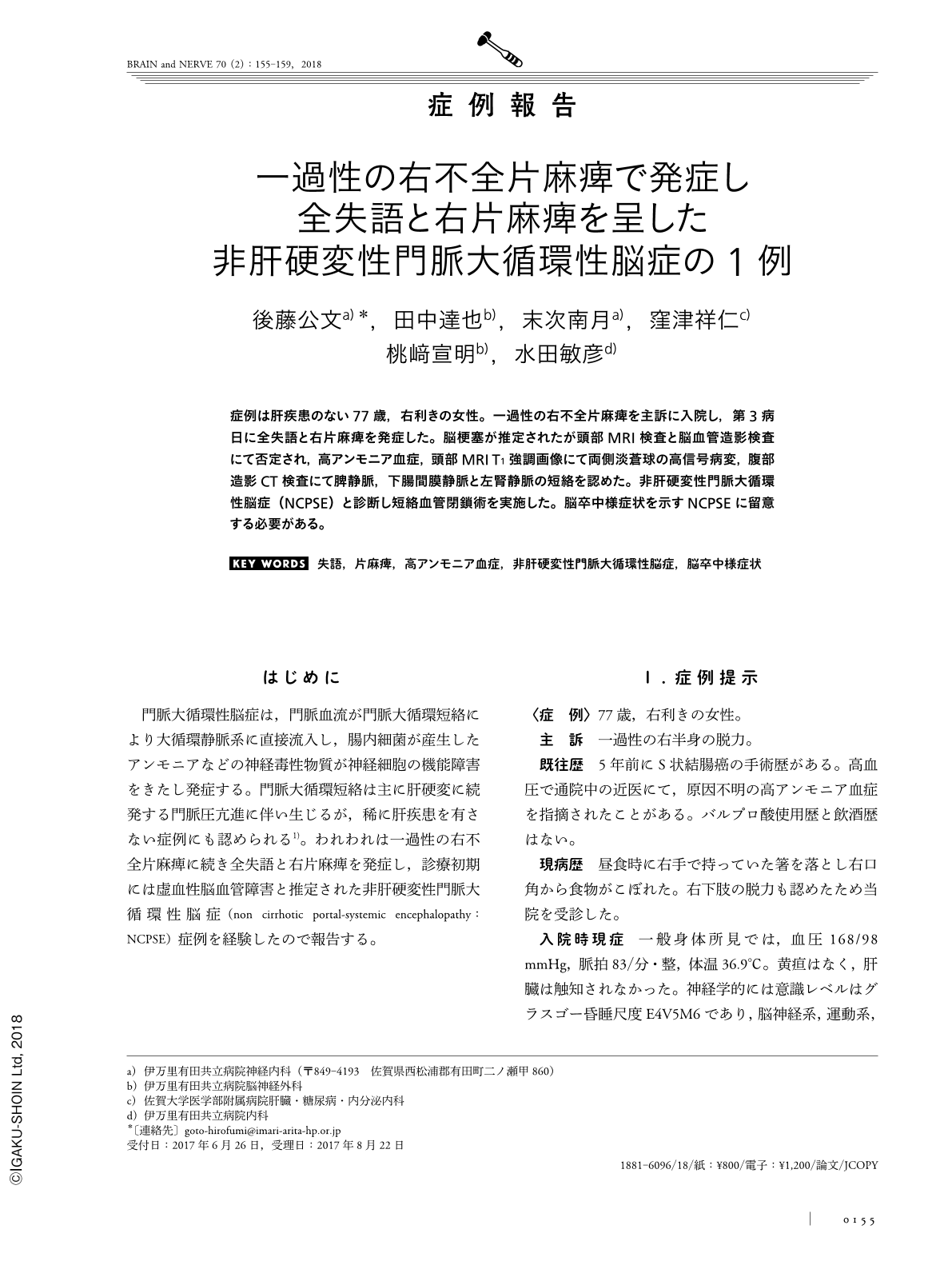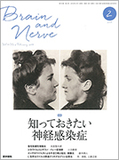Japanese
English
- 有料閲覧
- Abstract 文献概要
- 1ページ目 Look Inside
- 参考文献 Reference
症例は肝疾患のない77歳,右利きの女性。一過性の右不全片麻痺を主訴に入院し,第3病日に全失語と右片麻痺を発症した。脳梗塞が推定されたが頭部MRI検査と脳血管造影検査にて否定され,高アンモニア血症,頭部MRI T1強調画像にて両側淡蒼球の高信号病変,腹部造影CT検査にて脾静脈,下腸間膜静脈と左腎静脈の短絡を認めた。非肝硬変性門脈大循環性脳症(NCPSE)と診断し短絡血管閉鎖術を実施した。脳卒中様症状を示すNCPSEに留意する必要がある。
Abstract
A 77-year-old right-handed woman without any liver diseases was admitted to our hospital because of transient right hemiparesis. She developed total aphasia with right hemiplegia on the third hospital day. We suspected that she had a cerebral infarction following a transient ischemic attack. However, brain diffusion-weighted images revealed no abnormal-intensity lesions, and cerebral angiography showed patent arteries. Additionally, her serum ammonia level was elevated. Theta waves without triphasic waves were detected by electroencephalogram. T1-weighted magnetic resonance brain images revealed high-intensity signals in the bilateral globus pallidus. Enhanced abdominal computed tomography showed a portal-systemic shunt from the splenic and inferior mesenteric veins into the left renal vein via the left ovarian vein. The administration of branched-chain amino acids and lactulose improved her clinical symptoms. We confirmed the diagnosis of non-cirrhotic portal-systemic encephalopathy (NCPSE), therefore balloon-occluded retrograde transvenous obliteration of the shunt vessel was performed. The recognition of NCPSE on the examination of a suspected stroke patient is important, as patients with NCPSE can present as stroke mimics.
(Received June 26, 2017; Accepted August 22, 2017; Published February 1, 2018)

Copyright © 2018, Igaku-Shoin Ltd. All rights reserved.


